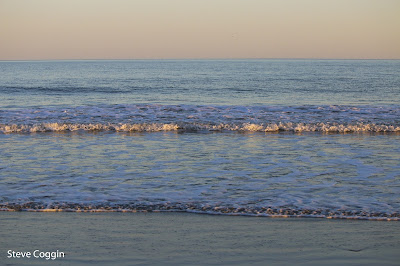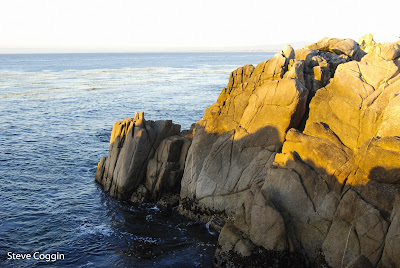There is nothing like a beach. The infinite horizon, the ever changing light, the sound and even the smell make beaches irresistible. About 40% of the US population lives near the coast. But, even at a beach lined with high-rise hotels, if you turn you back on the buildings there is a wet wilderness running to the vanishing point. This interface between land and ocean is harsh. Abundant water, salt and light mean unique plants and animals are found on beaches. Some are sea creatures that wash up. Some are denizens of the land that occupy the last real estate before the ocean. Others are highly adapted to living on this demanding edge of the continent.
I grew up in South Florida, a mile and a half from the Atlantic. The beach was part of the fabric of my life. Now I live hours from the nearest beach and it is always special when I get to a beach. This blog will examine some beaches and the creatures on them.
Florida
 |
| Lesser Black-backed Gull (Larus fuscus) on Lake Worth Beach, Florida. This large gull winters in the Southeastern United States where its numbers are increasing. |
 |
| Royal Tern (Thalasseus maximus) on Lake Worth Beach, Florida. Royal Terns are year-round residents from North Carolina to the tropics. |
 |
| Two White Ibis (Eudocimus albus) feeding in the surf at Canaveral National Seashore, Florida. These waders are found in fresh, barckish and salt water. |
South Carolina
 |
| Sunset at Surfside Beach, South Carolina. The sand on the South Carolina beaches is gray and made of sand washed into the Atlantic from rivers. |
 |
| Ring-billed Gull (Larus delawarensis) on Surfside Beach, South Carolina. This is the most common gull in the Southeast. |
 |
| A dead Common Loon (Gavia immer) washed up on the sand at Huntington Beach State Park, South Carolina. |
 |
| This may look like an aerial view of the Sahara Desert but these dunes are only two inches tall. Huntington Beach State Park, South Carolina. |
West Coast
 |
| The rocky shoreline of the Monterey Pennisula, California. |
 |
| Cannon Beach, Oregon has a sandy beach with sea stacks, large rocks produced by coastal erosion. This location was used in the great kid's adventure movie, The Goonies. |
Hawaii
 |
| A Green Sea Turtle (Chelonia mydas) sunning on a black beach. Punalu'u County Beach Park, Hawaii. |
 |
| Black sand beach backed by Coconut Palms (Cocos nucifera). Punalu'u County Beach Park, Hawaii. |
When I was a kid going to the beach with my family, we would swim and snorkle, body surf and beach comb. Now, I am not swimming or body surfing or snorkeling as much. But I still like to walk the beach, looking at the water and seaweed and all the animals at the end of the land.








No comments:
Post a Comment